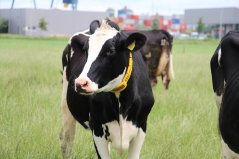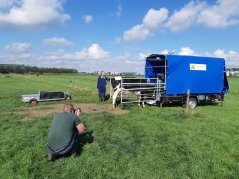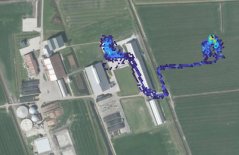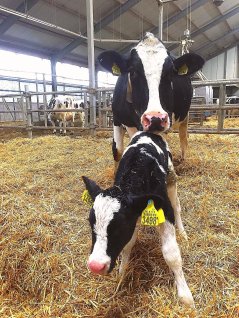
Nieuws
Blog 1. Dairy cow Louise1946: Grazing research
Dairy Campus in Leeuwarden is the innovation center for dairy farming and the dairy chain. The 500 dairy cows are indispensable to realize our mission. They mainly produce data, in addition to milk. Louise 1946 is one of these cows. We will follow her in this blog.
Louise1946 was born on March 10, 2018 and named after Prof.dr.ir. Louise O. Fresco, chairman of the board of Wageningen University & Research. The number 1946 is her work number and is part of her life number as stated in her passport. In this bi-monthly blog, we give an insight into the state of affairs at our center and what happens to our animals based on its activities.
Day and night outside grazing
In April last. Louise1946 was placed in the study 'Grassland management as a measure to reduce methane and ammonia emissions'. At the time, cows were selected for these groups that give at least 30 liters of milk per day with 150 days in lactation (average). She, along with 79 others, met all requirements.

Louise1946 entered the day and night grazing group of 16 animals in total. From June 16 to August 11 she was able to pasture outside, this is daily grazing on a new strip with a fixed size. At the beginning of August, however, temperatures rose so high that the heat protocol was launched. The group then had a siesta in the stable for several hours at noon.
Data
During this study, the methane emissions of the individual animals were measured with the GreenFeed measuring unit. Enteric methane is mainly produced by microbes in the rumen and mainly exits through the cow's mouth. An analysis of the exhaled air gives a good indication of the methane emission.
On August 3, Louise1946 got a smartphone with GPS-Logger attached to her collar. The tracker took measurements in the yard and in the stables of Dairy Campus for 24 hours. This produces the following images.
By reading the GPS data with Python, clustering the coordinates in hexagons and loading over a satellite photo, a heat map has been generated. The brighter the colors, the more often Louise1946 has been at some point. The "hotspots" in the image above is the GreenFeed measuring unit in the pasture (right) and (left) the milking parlor.

Greenfeed
Louise1946 visited the Greenfeeds 46 times in 2 weeks during 24-hour grazing, and 78 times in 2 weeks for limited grazing. On average she stayed about 4 minutes per visit. Its lowest emission was measured on July 9, around 150 g CH4 / day. Its highest emission was measured on August 7, above 500 g CH4 / day. This is not the average emission of hair over the day, but from one visit. She probably visited the Greenfeed on July 9 with a fairly empty rumen, and on August 7 with a full rumen / just after eating roughage. The data from Louise1946, together with the data from the other cows in the grazing study, are now extensively analyzed in order to better understand the effect of grass quality on methane emissions.

To be continued
On November 23rd, Louise1946 was transferred to the transition stable.
Update: one day after the publication of this blog, Louise1946 became a mother for the second time. On December 19 she gave birth to a healthy calf: Ymkje Louise. In the next blog we will look at the heredity and genetic predisposition of Louise1946 and her descendants.

